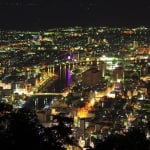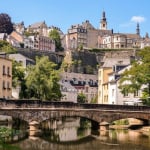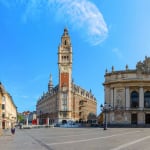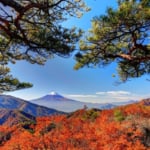Name: Yatatebashi Bridge
Address: 2-5 Shinmei, Sōka City, Saitama Prefecture, Japan
Official/Related Website:http://saipo.net/45010031.html
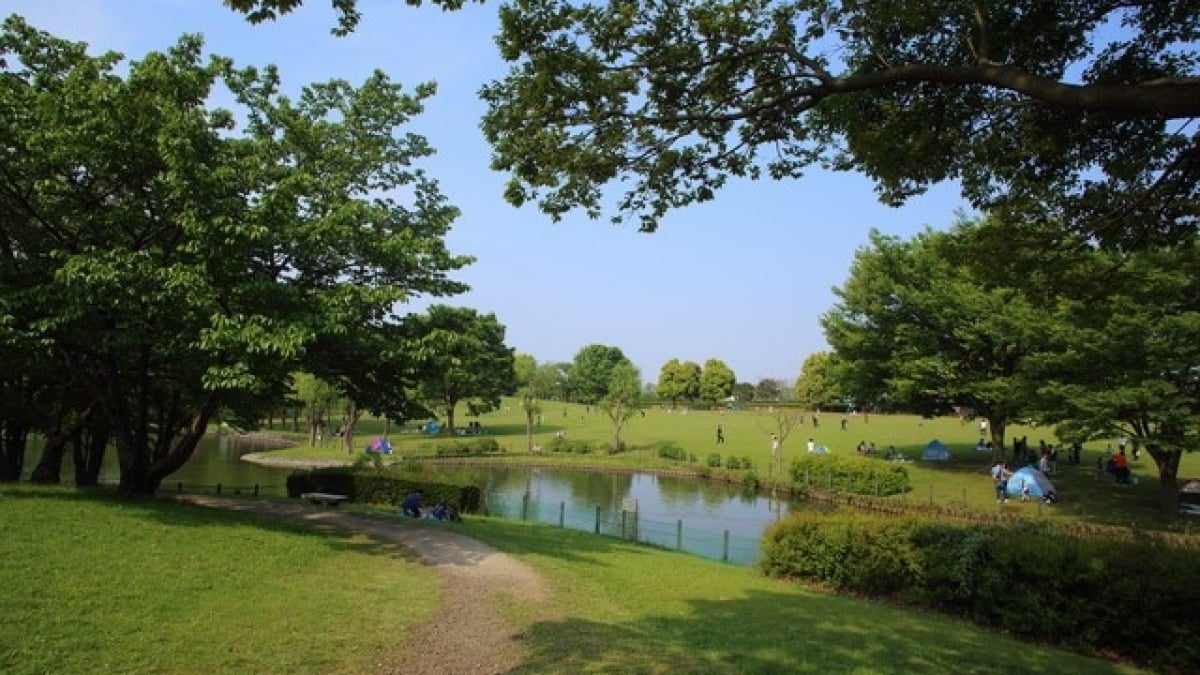
16 Must-Visit Tourist Spots in Soka! Experience the Historic Charm of This Former Post Town
Soka City (Sōka-shi) is located in southeastern Saitama Prefecture and shares a border with Adachi Ward in Tokyo, making it easily accessible from the capital. During the Edo period, Soka flourished as a post town, and remnants of its rich history can still be seen today.
The city is also famous for Soka Senbei (rice crackers), and there are plenty of attractions related to this specialty. As you explore Soka, be sure to enjoy its iconic senbei as well! Here, we introduce 16 must-visit tourist spots that showcase the charm of Soka City. Enjoy discovering them!
table of contents
[x] close
16 Must-Visit Tourist Spots in Soka! Experience the Historic Charm of This Former Post Town
- 1. Yatatebashi Bridge
- 2. Sōka Park
- 3. Sōka Matsubara Promenade
- 4. Hyakutai Bridge
- 5. Statue of Osen-san
- 6. Soka Shrine
- 7. Fudaba Riverside Park (札場河岸公園)
- 8. Soka City Museum of History and Folklore (草加市立歴史民俗資料館)
- 9. Soka Senbei Garden (草加せんべいの庭)
- 10. Osen Park (おせん公園)
- 11. Shinmei Shrine (神明宮)
- 12. Ryūsenji no Yu (竜泉寺の湯)
- 13. Asama Shrine (浅間神社)
- 14. Tōfuku-ji Temple (東福寺)
- 15. Sōsōan Museum (草創庵博物館)
- 16. Hōshaku-ji Temple
- ◎ Conclusion
1. Yatatebashi Bridge

A symbol of Sōka, Yatatebashi Bridge is a beautiful wooden-patterned arched bridge. With a length of 96.3 meters and a width of 4.14 meters, it is larger than the Hyakudai Bridge, another landmark in the area. From the top of the bridge, visitors can enjoy a stunning view of Sōka Matsubara, making it a perfect spot for a relaxing walk while taking in the scenery.
For a complete experience, visit Sōka Matsubara Promenade and Hyakudai Bridge, both of which are nearby, to fully immerse yourself in the picturesque beauty of Sōka.
2. Sōka Park
Established in 1988, Sōka Park underwent expansions and was fully completed in 1994. Spanning an area equivalent to four Tokyo Domes, it is a vast recreational space loved by local residents. The park features tennis courts, a multi-purpose sports ground, and an event plaza, making it a hub for both relaxation and physical activities.
One of the park’s highlights is its cherry blossom trees, which bloom beautifully in spring, making it a popular sakura viewing spot in Sōka. However, the park is not just a spring destination—visitors can also enjoy vibrant autumn foliage later in the year.
Another unique feature of Sōka Park is its campground. While reservations are required, many tourists and locals visit on weekends to enjoy camping and barbecue gatherings. With so many activities to choose from, Sōka Park is an excellent place for both leisure and adventure.
Name: Sōka Park
Address: 272-1 Kakinokicho, Sōka City, Saitama Prefecture, Japan
Official/Related Website:http://www.city.soka.saitama.jp/cont/s1805/a02/a03/a02/03.html
3. Sōka Matsubara Promenade
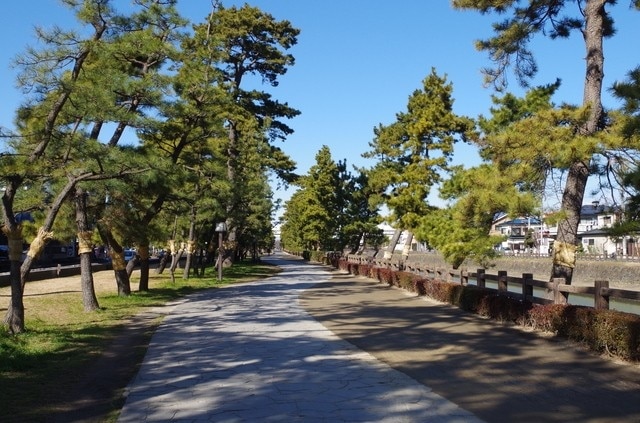
The Sōka Matsubara Promenade is a 1.5-kilometer-long tree-lined walkway, famous for its historic pine trees, which date back to the Edo Period. The pathway forms a green tunnel, attracting many visitors throughout the year.
Currently, 634 pine trees line the promenade, a number inspired by the height of Tokyo Skytree. The walkway is paved with stone tiles, ensuring a safe and comfortable stroll. Many locals and tourists alike come here for walking, jogging, and sightseeing, making it a fantastic destination for those who want to experience the natural beauty of Sōka.
Name: Sōka Matsubara Promenade
Address: 1 Sakae-cho, Sōka City, Saitama Prefecture, Japan
Official/Related Website:http://www.city.soka.saitama.jp/cont/s1805/a02/a02/a05/02.html
4. Hyakutai Bridge
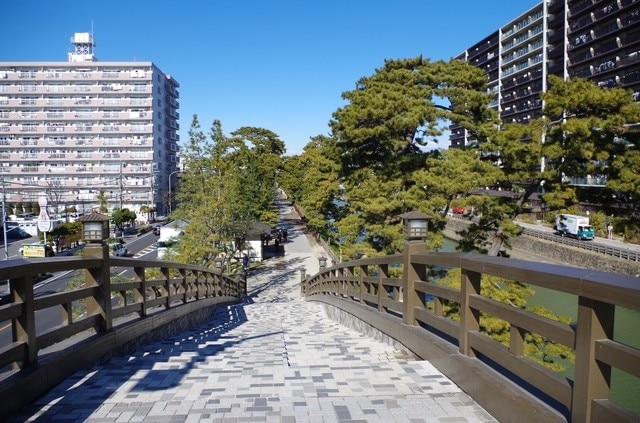
Hyakutai Bridge (百代橋, Hyakutai-bashi) is the counterpart of Yatate Bridge, which was introduced earlier. Completed in 1986, this bridge spans 63.5 meters in length and 3.5 meters in width. Its name is derived from the famous opening passage of Oku no Hosomichi by Matsuo Bashō, one of Japan’s greatest haiku poets.
Just like Yatate Bridge, Hyakutai Bridge is a symbolic landmark of Soka City. If you're visiting the area, be sure to take a stroll across this scenic bridge. You can also enjoy a relaxing walk along the Soka Matsubara Promenade, a popular sightseeing route that complements the beauty of the bridge.
Address: Soka City, Matsue 1, Saitama Prefecture
Official Website:http://www.city.soka.saitama.jp/cont/s1805/a02/a02/a05/02.html
5. Statue of Osen-san
Soka was once a thriving post town during Japan's Edo period, where travelers stopped to rest and enjoy local delicacies. One of the most famous figures from that time was Osen-san, a woman known for selling delicious dango (rice dumplings) at a local teahouse.
According to legend, a passing samurai suggested that she flatten the dango and grill them, transforming them into a crispy snack. She followed the advice, and the new treat quickly gained popularity—eventually evolving into Soka Senbei, the city’s famous rice cracker.
To honor her entrepreneurial spirit, a statue of Osen-san stands near Soka Station. If you're traveling to Soka by train, don’t miss the chance to see this iconic landmark and experience the authentic taste of Soka Senbei.
Address: 2-5-25 Takasago, Soka City, Saitama Prefecture
6. Soka Shrine
Also known as Hikawa Shrine, Soka Shrine is an important cultural and religious site, cherished by the local community. Many visitors come here for traditional ceremonies such as Shichi-Go-San (a festival for children), Hatsumiyamairi (newborn blessings), Yakuyoke (warding off misfortunes), and Ningyo Kuyo (doll memorial services). The main hall of the shrine is also a designated cultural property of Soka City.
One of the highlights at Soka Shrine is the Tsukinami-sai (Monthly Festival), held on the 1st and 15th of every month. Various other religious and cultural events take place throughout the year, making it a great destination for those looking to experience Japanese traditions.
Conveniently located just a 3-minute walk from Soka Station, the shrine is easily accessible by public transport. If you're visiting Soka, be sure to stop by and explore its rich cultural heritage.
Address: 2118-4 Hikawa-cho, Soka City, Saitama Prefecture
Official Website:http://www.sokajinja.jp/
7. Fudaba Riverside Park (札場河岸公園)
Fudaba Riverside Park (Fudaba Kashi Kōen) was established between 1989 and 1991 at the southern end of the Soka Matsubara promenade to commemorate the completion of a special emergency project for flood disaster prevention. This park features a watchtower and a reconstructed riverside shipping dock, providing visitors with plenty of historical sights to explore. From the watchtower, you can enjoy a panoramic view of the picturesque Soka Matsubara, making it a great spot for sightseeing.
Additionally, the park is home to a statue of Matsuo Bashō, erected to mark the 300th anniversary of his famous travelogue, Oku no Hosomichi (The Narrow Road to the Deep North). Don't forget to check it out! During spring, the park becomes a prime location for cherry blossom viewing, with beautifully illuminated trees drawing both locals and tourists. If you're planning to visit Soka in spring, be sure to stay until after dark to experience the magical nighttime light-up—a completely different atmosphere from the daytime scenery.
Name: Fudaba Riverside Park (札場河岸公園)
Address: 2-145 Shinmei, Soka City, Saitama Prefecture, Japan
Official Website:http://www.city.soka.saitama.jp/cont/s1805/a02/a02/a07/03.html
8. Soka City Museum of History and Folklore (草加市立歴史民俗資料館)
If you're looking for a budget-friendly historical experience, the Soka City Museum of History and Folklore is a must-visit. Admission is completely free! The museum is housed in the west wing of Soka Elementary School, which was originally built in 1926 as Saitama Prefecture’s first reinforced concrete school building. In 2008, it became Soka’s first nationally registered tangible cultural property due to its exemplary architectural design.
Inside, you’ll find an extensive collection of historical and folk artifacts related to Soka, including an exhibit dedicated to Matsuo Bashō. Parking is available, but space is limited, so public transportation is recommended. The museum is just a 10-minute walk from the Tobu Skytree Line Soka Station, making it easily accessible.
Name: Soka City Museum of History and Folklore (草加市立歴史民俗資料館)
Address: 1-11-29 Sumiyoshi, Soka City, Saitama Prefecture, Japan
Official Website:http://www.city.soka.saitama.jp/cont/s2105/b01/map/0050/17.html
9. Soka Senbei Garden (草加せんべいの庭)
Soka Senbei Garden is a paradise for rice cracker lovers! This unique theme park lets visitors watch skilled artisans make senbei (Japanese rice crackers) and even try their hand at grilling their own—no reservations needed! If you're visiting Soka, this is a fun activity you won’t want to miss. The store inside offers over 120 different varieties of senbei, making it easy to find the perfect souvenir for yourself or loved ones.
The garden also features a café where you can enjoy coffee, senbei-flavored soft-serve ice cream, and even rice cracker doughnuts. Light meals like onigiri (rice balls) are also available, so come hungry and enjoy a unique culinary experience.
Name: Soka Senbei Garden (草加せんべいの庭)
Address: 790-2 Kinmei-cho, Soka City, Saitama Prefecture, Japan
Official Website:http://www.yamakosenbei.co.jp/?page_id=91
10. Osen Park (おせん公園)
Osen Park is a historical spot in Sōka, offering a glimpse into the city's rich past. The park features a monument marking the birthplace of Sōka Senbei, the famous Japanese rice cracker. Visitors will also find a statue of Kawai Sora, a disciple of the renowned poet Matsuo Bashō, who accompanied him on his journey to the northern and Hokuriku regions.
Although small, Osen Park is an ideal place to take a break while sightseeing. Since it is located near the Shinmei Shrine (神明宮), another historical landmark, you can easily visit both in one trip.
Name: Osen Park
Address: 1-6 Shinmei, Sōka City, Saitama Prefecture, Japan
11. Shinmei Shrine (神明宮)
Shinmei Shrine, originally built in 1713, has undergone multiple restorations due to fire damage. The current shrine was rebuilt in 1847 and later underwent renovations in 1901 and 1977. Within the shrine grounds, visitors can find a Chikaraishi (力石), a "power stone" once used in strength competitions.
For locals, Shinmei Shrine is best known for its annual festival held every September. Even though it's late summer, many attendees wear yukata (traditional summer kimono), adding to the festive atmosphere. Since Sōka was historically a post town, the event often includes activities encouraging visitors to wear yukata while exploring the city. This makes September an ideal time to visit Sōka for an immersive cultural experience.
Name: Shinmei Shrine
Address: 1-6 Shinmei, Sōka City, Saitama Prefecture, Japan
Official Website:http://www.city.soka.saitama.jp/cont/s1410/a20/a03/07.html
12. Ryūsenji no Yu (竜泉寺の湯)
If you're looking to relax in a hot spring in Sōka, Ryūsenji no Yu is the perfect place! This natural onsen offers a wide variety of baths, including Hotaru no Tansan-sen (ほたるの炭酸泉), a natural carbonated bath, high-concentration carbonated baths, bubble-filled spa tubs, mild-temperature baths, and more. With so many options, you might find yourself soaking for hours!
For families, there’s even a special bath for infants and toddlers, making it a great spot for those traveling with young children.
Besides the onsen, the facility also offers stone saunas and relaxation areas for a complete wellness experience. If you have time, consider trying these services. You can also enjoy a meal inside the facility, making it a great place to take a break while sightseeing.
Ryūsenji no Yu provides free parking, making it convenient for those traveling by car. There’s also a free shuttle bus from Sōka Station and Matsubara-Danchi Station, ensuring easy access for those visiting via public transportation. Be sure to check the official website for the shuttle schedule before your visit!
Name: Ryūsenji no Yu
Address: 476 Yatsuka Kamicho, Sōka City, Saitama Prefecture, Japan
Official Website:http://ryusenjinoyu.com/souka/
13. Asama Shrine (浅間神社)
Asama Shrine is dedicated to Konohanasakuya-hime no Mikoto, a revered deity in Japanese mythology. While the exact year of its establishment remains unknown, historical records indicate that the current main hall was rebuilt in 1842. Recognized for its cultural significance, the shrine's main hall was designated as a Cultural Property of Sōka City in 1976. Additionally, the shrine grounds are listed among the Eight Scenic Spots of Sōka.
A major highlight of Asama Shrine is its annual festival, held on the first Saturday and Sunday of July. During this time, the shrine comes alive with locals and visitors gathering to celebrate, making it a vibrant event in Sōka.
Name: Asama Shrine
Address: 3-3-24 Sezaki, Sōka City, Saitama Prefecture, Japan
Official/Related Website:http://www.city.soka.saitama.jp/cont/s2105/b01/map/0100/10.html
14. Tōfuku-ji Temple (東福寺)
Tōfuku-ji Temple is a historic Buddhist temple cherished by the people of Sōka City. Its main hall, gate, and bell tower date back to the late Edo period, offering visitors a glimpse of Japan’s rich past. Notably, the temple gate and bell tower are designated Cultural Properties of Sōka City.
A unique feature of Tōfuku-ji is its "Sanko no Matsu" (Three-Pronged Pine Tree). According to local legends, finding a fallen leaf from this tree brings good fortune!
Conveniently located within walking distance from Sōka Station, Tōfuku-ji Temple is a great stop for those exploring the area on foot.
Name: Tōfuku-ji Temple
Address: 1-3-43 Shimmei, Sōka City, Saitama Prefecture, Japan
Official/Related Website:https://goo.gl/ATP8oF
15. Sōsōan Museum (草創庵博物館)
The Sōsōan Museum offers visitors a hands-on experience of how rice is transformed into traditional Japanese rice crackers (senbei). A major highlight of this facility is the opportunity to watch the senbei-making process and taste freshly baked rice crackers on-site.
In addition to factory tours, visitors can participate in a senbei hand-grilling experience—a fun and interactive activity that requires advance reservation.
The museum also sells freshly grilled senbei, which are rare outside the facility. These crispy and aromatic rice crackers make for a perfect souvenir or snack! A parking area is available, making it convenient for travelers exploring Sōka by car.
Name: Sōsōan Museum
Address: 2-16-17 Aoyagi, Sōka City, Saitama Prefecture, Japan
Official/Related Website:http://www.sokasenbei.co.jp/
16. Hōshaku-ji Temple
Hōshaku-ji Temple is renowned as the "Temple of a Thousand Jizō Statues." Inside, you will find 1,000 Jizō statues, each standing approximately 23 cm tall. The sheer sight of these statues is truly overwhelming. Notably, some statues wear red robes, while others are dressed in black—an intriguing detail to check out during your visit. The temple is conveniently located about a 10-minute walk from Shinden Station on the Tobu Skytree Line.
Name: Hōshaku-ji Temple
Address: 169 Kinmeicho, Sōka City, Saitama Prefecture
Official/Related Website:https://goo.gl/hkgOUI
◎ Conclusion
How did you find these 16 must-visit tourist spots in Sōka City, Saitama Prefecture? From historical sites and scenic nature spots to family-friendly hot springs, this city is packed with exciting attractions. History buffs and fans of Matsuo Bashō will also find plenty of places to explore.
To make the most of your visit, take your time and immerse yourself in the rich culture and beauty of Sōka City. Enjoy the sightseeing and local cuisine, and create unforgettable memories!
RELATED ARTICLES
REGIONS
CATEGORIES
FEATURED ON Soka
-
Soka
MOST POPULAR ON Soka
-
 1
1Doha: Must-see Attractions in the Capital of Qatar
-
 2
2Toronto: 10 Things to do in this Picturesque Canadian City
-
 3
3Amarillo: A City Famous for It’s Amazing Canyons, Great History and Music
-
 4
4South Korea: Dazzling Scenery, Rich Culture and Fascinating History
-
 5
5Kuwait: A Country in Middle East Asia Famous for Hot Sand Dunes and Stunning Cityscape

